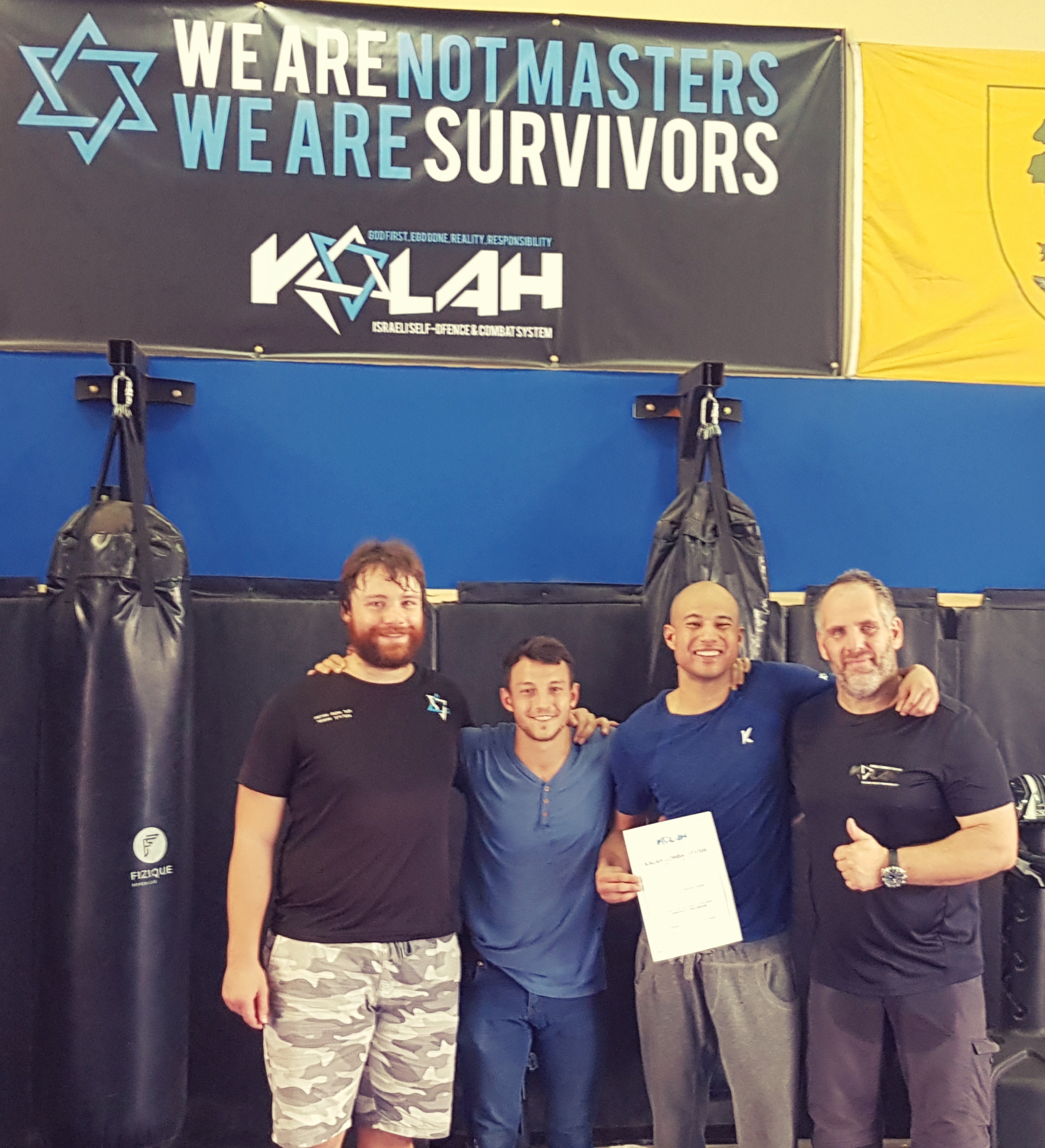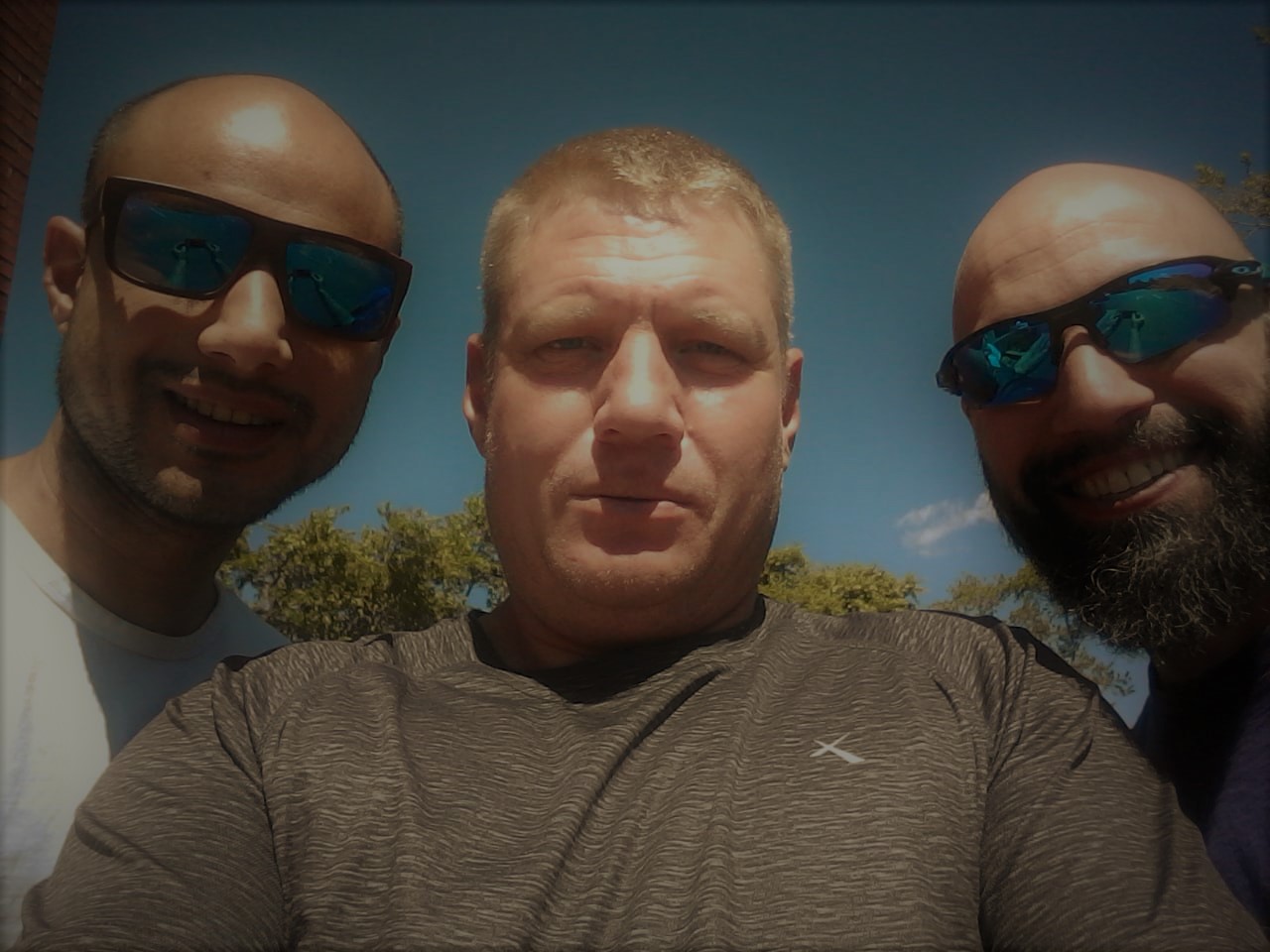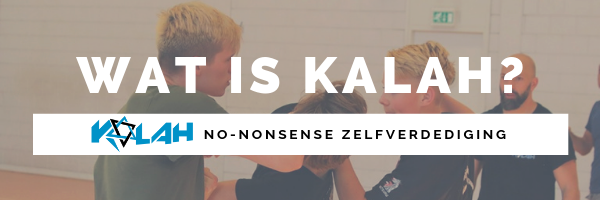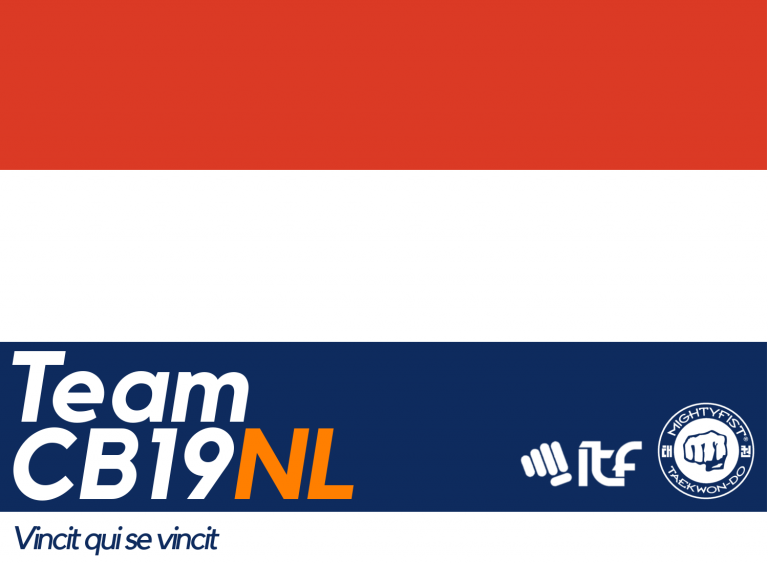Report: Kalah Instructor Course in South Africa [ENGLISH]
CENTURION (South Africa), 25.02.2019 – After a brutal week of training, Jair successfully completed the Kalah Instructor Course Level 1. Kalah is a realistic fighting method aimed at effectively and efficiently surviving violent encounters, and is constantly being developed by the ex-special forces Israeli Idan Abolnik and his team. Full report [English] below!

Jan, Herman, Jair and Idan: Kalah Instructor Level 1 Certificate in the pocket!
First Contact
As an instructor, you’re always looking to broaden and deepen your knowledge. This is how a video popped by on Facebook by one Idan Abolnik. He was pretty outspoken on the current state of the self defense industry, demonstrating why those training methods were actually detrimental to the chances of survival of the students of those instructors. The solutions he came up with were “simple” and effective, though cautioning nothing in the reality of self defense is “simple”. He also showed that his stuff worked under real resistance (contrary to most self defense videos that predominantly show beautiful moves on cooperating training partners).
Unfortunately I missed out when Abolnik visited The Netherlands in 2017, so when he returned last October 2018, I grabbed the opportunity with both hands. That weekend was more than enough to make me see there was so much to be learned in this “Kalah system”. After some detours I started planning an interesting 2019 spring break in South Africa.
Landed
Kalah instructor Jan picked me up at Tambo International Airport, Johannesburg (SA) around 22:30h after a comfortable flight. Jan had just returned from a week in the bush, where he had been hiking and living of the land, so to speak. His rough beard completed that mental picture. Driving to the hotel, life in South Africa came up. Although the country has so much beauty to offer: violent crime over here is extreme, and extremely more likely to occur than in our safe, quiet lowlands.
Violence & Garage Pie
Jan tells me about the part of Pretoria where he lives, not too far from the police station, where there’s a home invasion around five times per week on average. Just to make sure you understand: a home invasion is like a visit from a SWAT team, but it’s criminals instead of the police. And Pretoria – university city and governmental seat of the country – is relatively quiet compared to Johannesburg. Daylight robbery and murder on a busy street just doesn’t make the news there anymore. Crime syndicates led by ex-military are operating in the city. They know what they’re doing and are working with poorly paid police officers and civil servants. Inside jobs occur regularly, like the popular cash-in-transit heists.
Because it’s late and not many places are open anymore, we’re picking up some food at the local gas station, or garage as they call it here. This is where I’m initiated in the goodness that is Garage Pie. This stuff of legends tasted really good, despite the slight risk of gastrointestinal havoc as punishment for my naivety.

Jair, Caspar & Pascal: Before…
Buddies
At the hotel in Centurion, squeezed in between Pretoria and Johannesburg, I meet course buddy Caspar. He’ll be doing the Tactical Farmers Instructor Course. In the countryside it’s yet another story of violence. In response, armed security companies are hired to keep an eye out for the farmers, supported by trained volunteers who act as vigilante groups. They’re much quicker on the scene than the police. Matter-of-factly he tells me about the epidemic street justice in the large suburban areas, once welcomed as a solution to the problematic deficit in law enforcement capacity.
The next morning at breakfast I meet another course buddy, Pascal, who’ll be doing SWAT en Close Protection. He already completed the level 1 and 2 Kalah Instructor course. We talk about the intensity of Kalah and what to expect. To be honest, after the seminar back home I knew I was in for a tough week, but now I knew I had to double up on the mental preparations.
We went out for a ride with the guys to explore the surroundings. The gated communities, enclosed by high walls and fences with electrical wires and/or razor wire gave the sense of an open air prison tour.
Then we arrived at the studio. It’s always a special feeling when you finally see something in real life that you’re so familiar with through TV, movies or social media. I had the same experience the first time I walked around in New York City. But this was the Kalah studio of Idan Abolnik. The lion’s den. Tomorrow our journey would begin, right here.
Into the Deep
Jan welcomes us just before 9AM. Normally we would warm up with the drills of the previous days, but this being the first session, we did a regular warm up. Our first and our last. After a few minutes Jan explained and demonstrated the principles of Kalah.
The first drill was a frontal rifle threat, which is a pretty hardcore start of the day, I thought. Then we ran through the movements for a rifle threat from the rear. Gun threats were up next. This is what our days would look like from now on: defense against gun, rifle, stick, machete (“panga” in Afrikaans), punches, grabs, chokes and ground fighting would all be explored. All 360 degrees (front, back, side). We would be learning how to consistently solve life-threatening problems, armed with the principles of Kalah.
The beauty of Kalah is its simplicity. It’s just a few movements you need to “get”. This drastically improves the odds you won’t freeze because of an overwhelming amount of options for making your move. You learn to ditch your ego as soon as possible: a tour de force is the last thing you want on a stage you did not set yourself. You learn to tactically use humble (body)language, not to set off the enemy, and build your element of surprise. When you see your moment, you go all-in and take the initiative – and keep it – and thoroughly remove the enemy’s motivation to do you any harm. That is basically how Kalah works.
Reality
The way we drill in Kalah should look familiar: you start out slow, add speed, until you can do it full agression, as Idan likes to call it. This process repeats itself with another one or two drills, and then there’s a stress test. This is where you’re brought to the point of exhaustion (like by crawling up and down the studio on your back, carrying a heavy bag), while being attacked in intervals. You don’t know who will attack, or how, or how frequently. You’ll be disoriented, lactic acid dripping out of your eyes. But you must react. And a couple of sets of this fun stuff, depending the volume of drills you did that day. And if it you didn’t survive, you go again.
The result is that you will be able to respond instinctively when confronted with (sudden) violence.
The drill instructor at hand will repetitively remind you of why you’re putting yourself through all this: learning to survive. If you don’t learn how to fight for your life now, how do you expect to fare in the unfortunate case you end up in such a situation? Because it’s a whole different ball game; the luxury of a training studio, soft mats, with an instructor giving you hell, waving a fake gun, screaming at you he wants to know where the keys to the safe are, where your wife sleeps – or a ruthless person with seriously bad intentions and real bullets.
Daily Grind
The second day I mostly worked one-on-one with instructor Herman, while my buddies were handled by Jan. Herman looks like really friendly nice guy, but let me tell you, the dude can flip a switch and go full on beast mode in a blink of an eye. He is genuinely terrifying in his role as a bad guy, and a great instructor.
As of Thursday Idan paid us a daily visit, straight out of a 10-day seminar and course series in Brazil. If you thought Jan and Herman were intense: Idan is next level. My training almost felt soft compared to the layers of hell my buddies were eating.
Not every day was nuclear, so to speak, but your body just lets you know how it feels more clearly as the week progresses. You will have to put up with injuries, training Kalah. Bruises, muscle ache, headache… But there’s a strong work ethos that everybody makes sure you don’t end up with serious damage.
The Final Test
Monday morning February 25th it’s time for the last bits of the curriculum, a revision of all previous material, and the notorious final test. Idan gave me the weekend off to recover a bit. After an hour of training with Jan, Idan lets me know we’re about to start. I can have a sip of water.
Looking up, I’m confronted with Idan, his eyes fixed on me, along with a knife on my throat: it’s going down. What followed was a flood of mental and physical terror, while being constantly attacked with the full arsenal. My body waived me goodbye somewhere halfway and wished me all the best with what was left of my willpower. After every set Idan shouted the question if I wanted to quit. Not an option. Then he announces the last attack. I don’t believe him, but it really was. I have no idea how long this all took. “Broken” doesn’t begin to describe how I feel. It’s like my exhaustion got its own body and was laying next to me, being exhausted.
When I finally caught my breath it was time for me to reflect: how I had experienced the past week, how I looked back at my final test, what my plans are for the future, and also practical things like how to setup my first Kalah classes were discussed. Slowly I realize I’ve made it.
Tradition
Kalah is a modern invention, but it’s in line with tradition. You learn a couple of core moves and tactics that will be applicable in multiple situations – be it with slight modifications – if, and only if you understand the underlying principles. This is how the kata from Karate work (and of course our ITF Taekwon-Do tuls, which are derived from the kata): a low “block” has at least 75 applications. This is why you would be working on one or two forms for years back in the days, before the master would pick a more advanced form, suited to the eager student’s capabilities and preferences. Only when Karate was popularized and standardized all those kata were united in a single curriculum, and belts were introduced with a new kata to go along with every color – a concept borrowed from the immensely popular Judo.
In China you had the “inside” and “outside” training by the old Tai Chi masters. More advanced applications were kept within the families, who each had their own versions, altered throughout generations. Only the inner circle really knew what was what. Outsiders were presented with modified forms to prevent knowledge from falling into the wrong hands.
Modern Times
But these are modern times and Idan actively and frequently publishes onto his Facebook page how and why he does what he does. In Kalah there are no belts, no “Masters”. He has a higher goal, which is incrementally increasing the chance of survival for those he (indirectly) instructs, should they ever be confronted with a life-threatening violent encounter. Maybe the chances of that happening are pretty slim in The Netherlands, but we’re lucky. Things are different in South Africa, for example.
The principles of Kalah are common sense: don’t be threatening, be aware, take control over the enemy as soon as possible, put him on the back of his heels, and remove his motivation quickly and resolutely.
You find these principles baked into the ITF Taekwon-Do tuls: you spot possible danger (attetion: Charyot); you show respect, bow, but keep your eyes open (Kyong Ye); snap into mental readiness (Junbi spirit), ready for action (Si-Jak!), as Sabums Robert Boer and Roy Rolstad always explain in their ITF Radix seminars.
Beside the “action” hand/arm that does the striking, there’s always the other hand/arm that works along with it (e.g. the dangi-son, or “pulling hand”, functioning as a limb control).
The majority of the techniques in the tuls are forward, moving in, attacking (sorry, but a “block” is not what you probably think it is). By the way: all techniques presented in Kalah can be linked to familiar techniques from our tuls (for the freaks: spot those doo palmok makgis, doo bandalson makgis en dollimyo makgis!).
The way of drilling is also parallel to the way the old Karate masters trained. First you learn the form, then the applications and tactics, you develop deep understanding of the principles at work, and then you put it all to the test. Funakoshi, father of modern Karate (also Karate teacher of ITF Taekwon-Do founder General Choi) wrote: “Once a form has been learned, it must be practiced repeatedly until it can be applied in an emergency, for knowledge of just the sequence of a form in karate is useless“.
Warrior Spirit
There’s a reason Idan calls Kalah students warriors. You only make it through that final test if you keep your shit together, holding on tightly to the principles that should be drilled into your every fiber – and never, ever give up. No matter how fit you are coming in, you will be pushed to that zone where you start to question your life’s choices. And then there’s just you and your will to survive.
The Future
Now what? I went to South Africa with the idea that no matter what, I’ll be flying back to Amsterdam with loads of experience. For starters, I’ll take some time to recover. But not for long, because we should be starting up with Kalah classes at Taekwon-Do School Amsterdam very soon! In cooperation with Idan and the Dutch Kalah organization we’ll be working on setting up shop. Also I’ll be planning my continued training to keep up to date as an instructor in Kalah.
As mentioned above, the Kalah principles fit in neatly within our tul principles and we’re expecting to complement our ITF Taekwon-Do classes in a very valuable way.
The first step has been taken.
Jair Stenhuijs
Kalah Trainen?
Lees hier meer over wat Kalah precies inhoudt. Onze lestijden vind je hier en vraag direct een gratis proefles aan!









